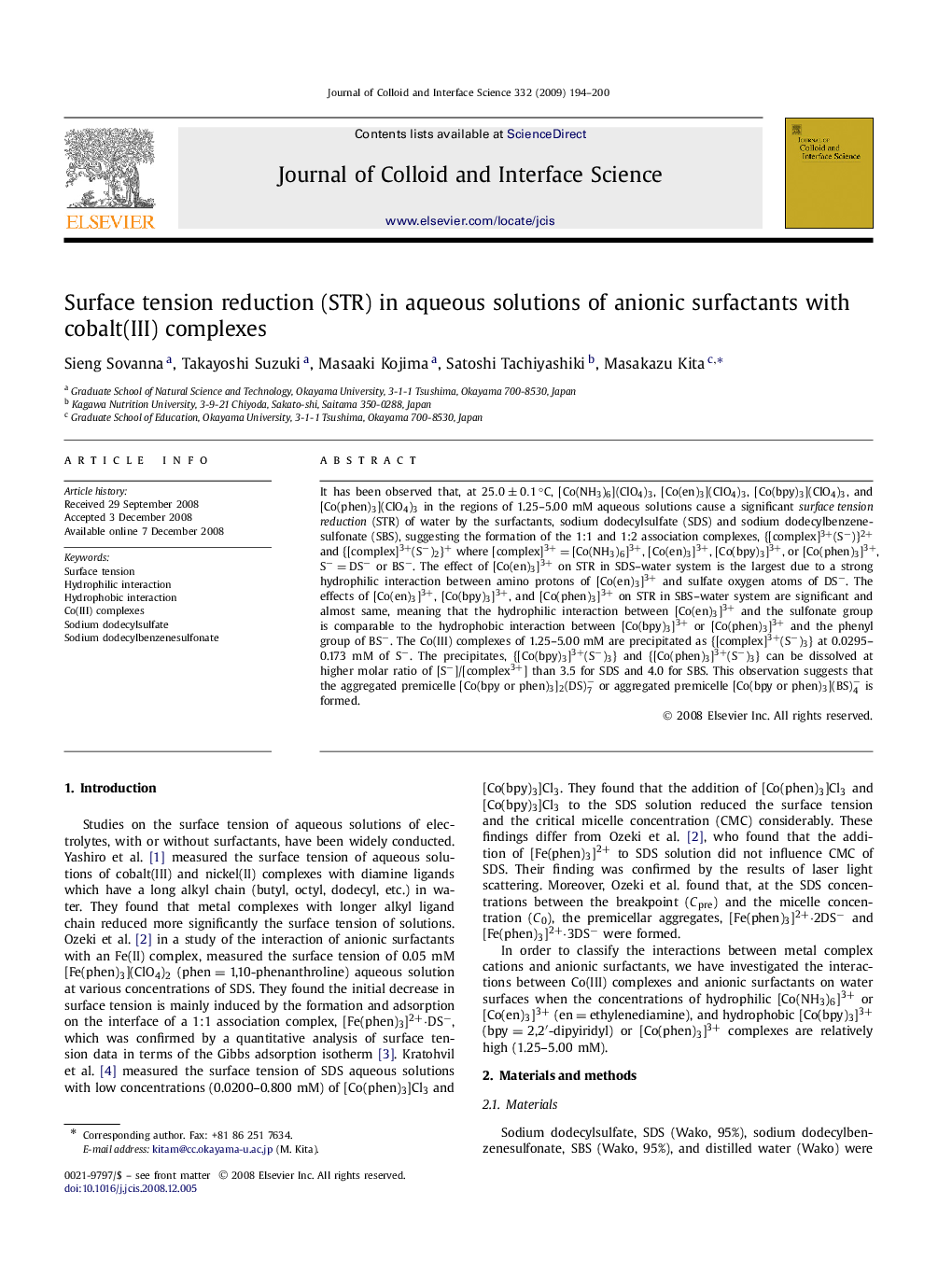| Article ID | Journal | Published Year | Pages | File Type |
|---|---|---|---|---|
| 610502 | Journal of Colloid and Interface Science | 2009 | 7 Pages |
It has been observed that, at 25.0±0.1°C, [Co(NH3)6](ClO4)3, [Co(en)3](ClO4)3, [Co(bpy)3](ClO4)3, and [Co(phen)3](ClO4)3 in the regions of 1.25–5.00 mM aqueous solutions cause a significant surface tension reduction (STR) of water by the surfactants, sodium dodecylsulfate (SDS) and sodium dodecylbenzenesulfonate (SBS), suggesting the formation of the 1:1 and 1:2 association complexes, {[complex]3+(S−)}2+ and {[complex]3+(S−)2}+ where [complex]3+ = [Co(NH3)6]3+, [Co(en)3]3+, [Co(bpy)3]3+, or [Co(phen)3]3+, S− = DS− or BS−. The effect of [Co(en)3]3+ on STR in SDS–water system is the largest due to a strong hydrophilic interaction between amino protons of [Co(en)3]3+ and sulfate oxygen atoms of DS−. The effects of [Co(en)3]3+, [Co(bpy)3]3+, and [Co(phen)3]3+ on STR in SBS–water system are significant and almost same, meaning that the hydrophilic interaction between [Co(en)3]3+ and the sulfonate group is comparable to the hydrophobic interaction between [Co(bpy)3]3+ or [Co(phen)3]3+ and the phenyl group of BS−. The Co(III) complexes of 1.25–5.00 mM are precipitated as {[complex]3+(S−)3} at 0.0295–0.173 mM of S−. The precipitates, {[Co(bpy)3]3+(S−)3} and {[Co(phen)3]3+(S−)3} can be dissolved at higher molar ratio of [S−]/[complex3+] than 3.5 for SDS and 4.0 for SBS. This observation suggests that the aggregated premicelle [Co(bpy or phen)3]2(DS)−7 or aggregated premicelle [Co(bpy or phen)3](BS)−4 is formed.
Graphical abstractThe effect of [Co(en)3]3+ on STR in aqueous solutions of SDS is largest due to a strong hydrophilic interaction between amino protons of [Co(en)3]3+ and oxygen atoms of the surfactant.Figure optionsDownload full-size imageDownload as PowerPoint slide
